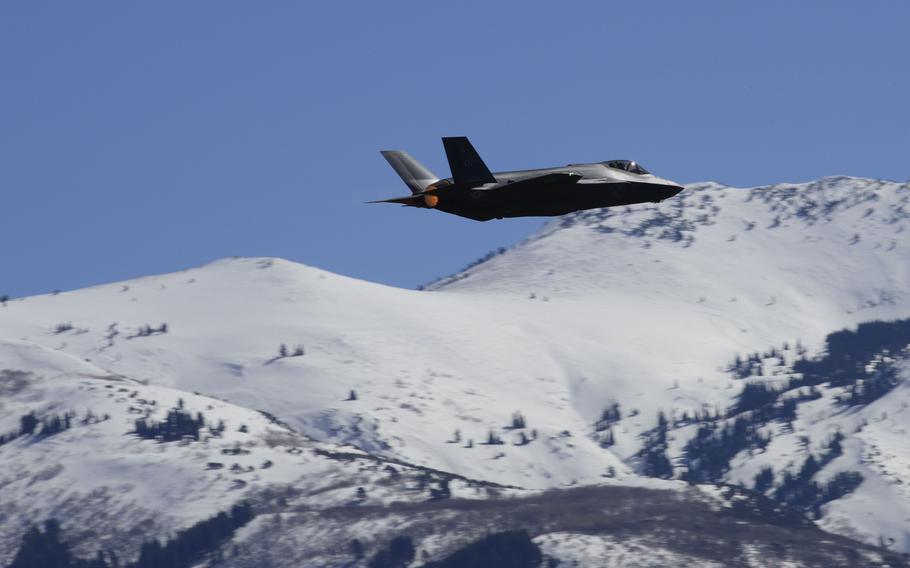
Huddled in a control center deep in a bunker in Uedem, western Germany, operators monitor air traffic 24/7 for the North Atlantic Treaty Organization territory from the Alps up to Iceland. A green blip on radar screens on Tuesday showed what appeared to be a Russian plane likely looking to collect intelligence on anything from radar capabilities and air bases to logistics on the ground. (Airman 1st Class Joshua King/Air Force)
An unidentified Russian aircraft flying off the northern coast of Norway raised up an alert among NATO officials this week, prompting a Norwegian fighter jet to lift off into the sky and investigate.
Huddled in a control center deep in a bunker in Uedem, western Germany, operators monitor air traffic 24/7 for the North Atlantic Treaty Organization territory from the Alps up to Iceland. A green blip on radar screens on Tuesday showed what appeared to be a Russian plane likely looking to collect intelligence on anything from radar capabilities and air bases to logistics on the ground.
A duty controller at the operations center ordered a so-called alpha scramble, which sends a fighter jet in air within minutes to monitor the aircraft, collect any markings or tail-numbers and check if it’s carrying any missiles. That information is fed back into a database to match any previous records.
Such encounters occur every other day on average and haven’t seen a significant uptick since the start of Russia’s war with Ukraine, NATO officials said. Monitoring the alliance’s airspace has become all the more important since the invasion as NATO looks to beef up its presence in the east to deter any potential aggression from Moscow, but also looks to ensure no incidents spiral out of control and unintentionally drag NATO allies into the conflict.
“We don’t want to be provocative but it’s to determine what this airplane is doing and report that back,” said Steve Carocci, director of the air operations center at Uedem, adding that so far officials haven’t seen any NATO airspace violations from the Russian side.
An incident earlier in March, when a drone flew from Ukraine through several NATO countries before crashing outside Zagreb, has highlighted the sensitivity of the work. An investigation is ongoing into the incident.
Russian intelligence-gathering planes also frequently cruise near Norway, in light of Moscow’s interests in the Arctic Circle. Moscow is making the so-called Northern Sea Route, which runs along its Arctic coastline, a key part of its strategy to boost natural gas exports to Asia.
The NATO alliance, which includes the U.S. and 29 other countries as members, employs as many as 8,000 people for air policing. In addition to Uedem, a center in Torrejon, Spain monitors traffic in the southern part of the alliance. Around 30 surveillance and fighter jets are in the air at any one time monitoring NATO airspace.
That includes also peering into Ukrainian territory, to some degree. While no allied planes will enter into Ukrainian airspace, some planes and ground radar sites can pick up information about what’s in Ukrainian airspace or on land. NATO’s airborne warning and control system aircraft, for instance, can see up to 250 kilometers (155 miles) on ground and 400 kilometers in the air, depending on weather conditions.
“You always need some early warnings,” Harold Van Pee, commander of the Uedem center, said. “The farther you can look into the other side, the more time you have to prepare for what’s coming up.”